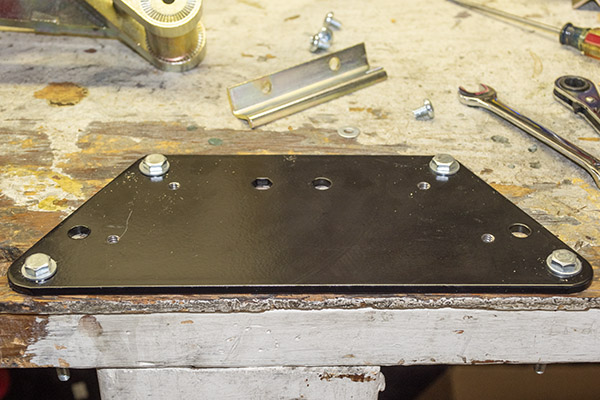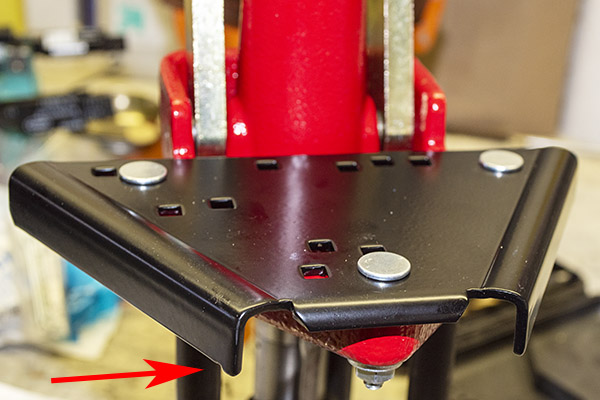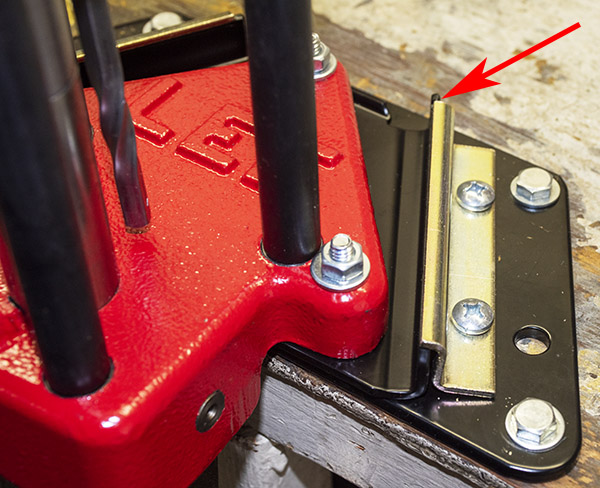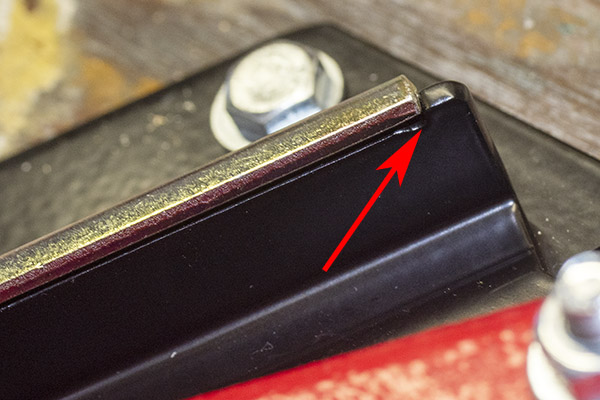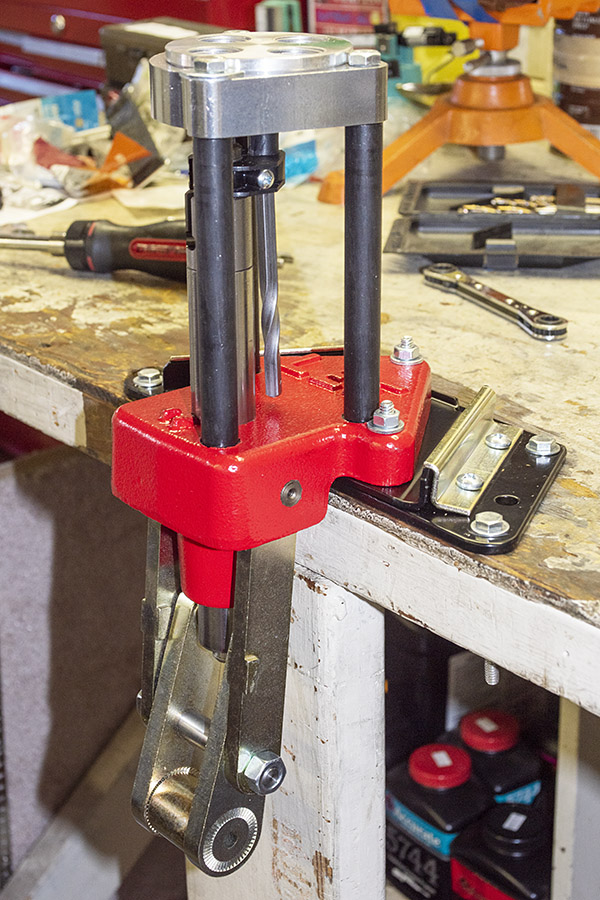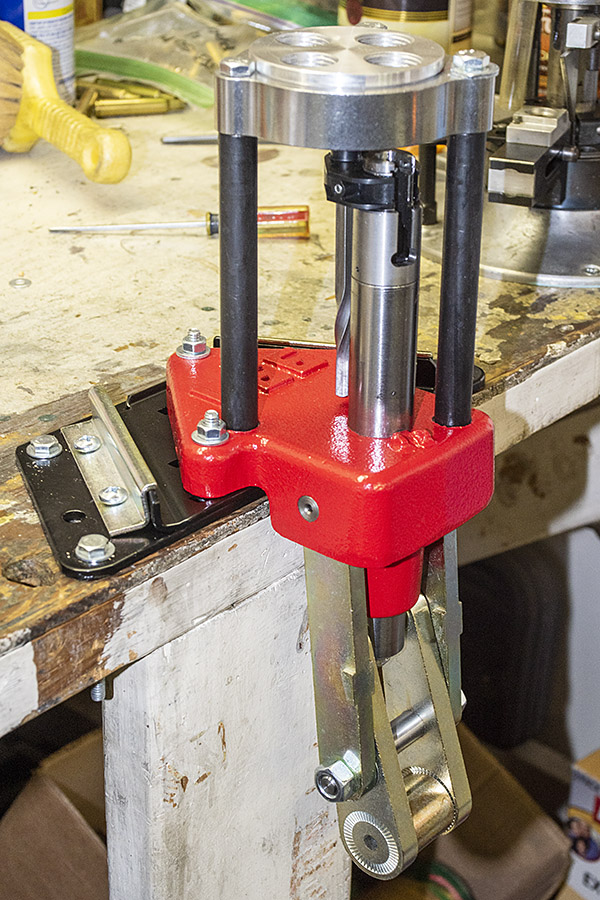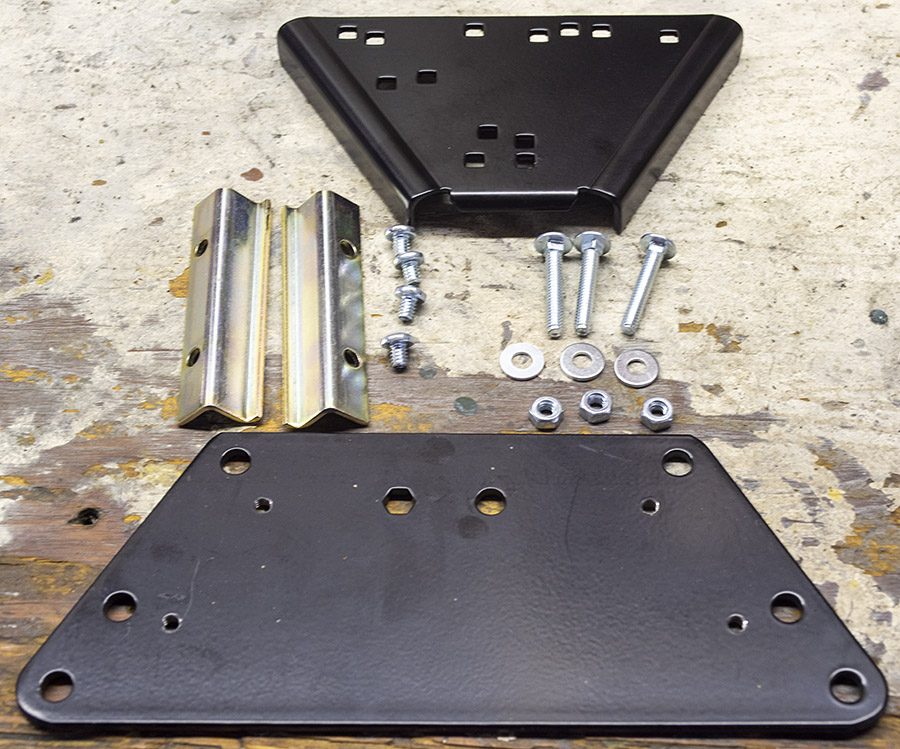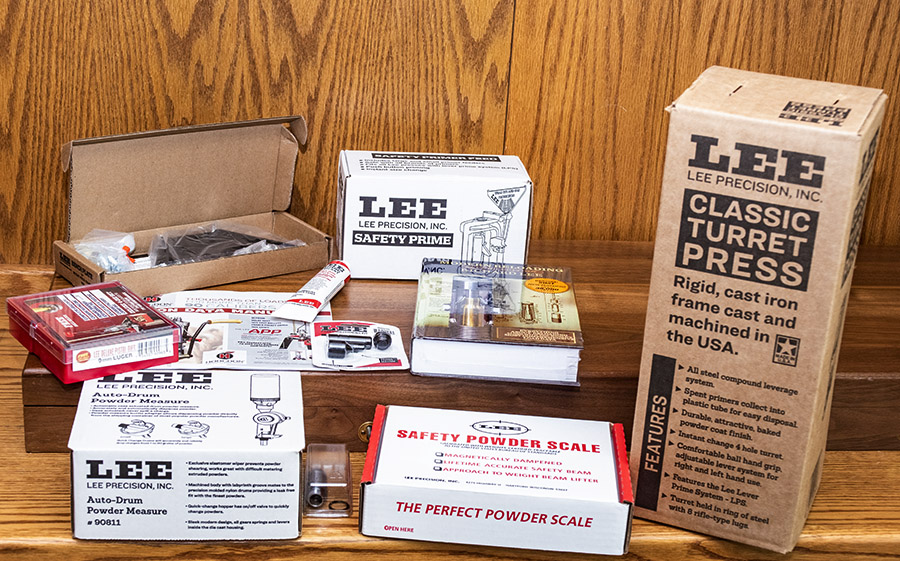By Joe Berk
We’re writing a series of blogs on the Lee Precision Classic Turret Press Kit, and this first one focuses on unpacking and taking an initial look at the kit. I think the YouTube kids call this a “reveal.” I’ll just call it unboxing and seeing what’s in the box. I thought I could do a single blog on the Classic Turret Press Kit, but there’s too much included in the kit and too much that’s new to me to handle in one blog. We’re going to instead do a series of blogs: One on each item that’s included with the kit, a blog on setting the press and dies up, a blog on reloading with the Lee equipment, and a blog on how the ammo reloaded with the Classic Turret Press Kit performs. There’s a lot here. You’ll get a feel for just how much in this initial blog on the Classic Turret Press Kit.
Here’s the picture on Lee’s website for the kit, which Lee advertises for $380. 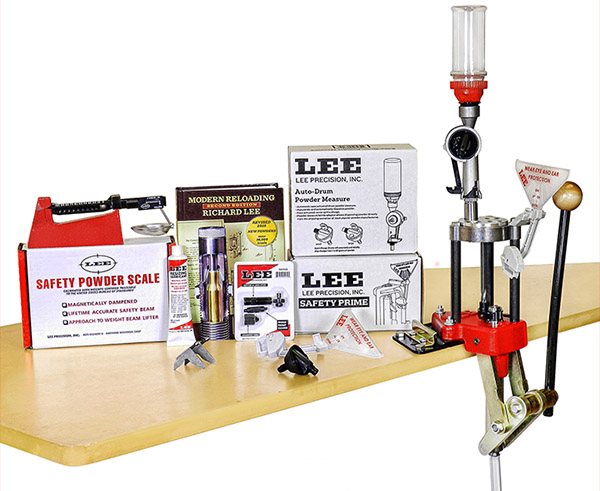
The photo above shows everything set up, but the photo doesn’t do justice to the excitement associated with getting this kit, taking everything out of the box, and opening it. Nor does it convey what I expect to be the satisfaction I’ll experience with using the Lee equipment. That will be the subject of future blogs. Think of this first blog as Christmas morning. That’s what opening and unpacking the Lee kit felt like to me.
ExNotes blog readers will recall that good buddy Jose left a comment on one of our Lee Deluxe 4-die set blogs. Jose told us about his Lee turret press. He wrote a guest blog or two for us here on ExNotes and he is a Ruger No. 1 aficionado, which means he stands tall with me. After reading Jose’s comments, I had to check out the Lee Classic Turret Press Kit myself, and after poking around on Lee’s site a bit and seeing what the Lee kit included, I knew I wanted one. I specifically wanted to set it up for 9mm using Lee’s Deluxe 4-die set. I’ve been using older 9mm dies from various die makers, and my reloads would sometimes jam. With my old dies, the crimps were inconsistent, and I knew from my experience with Lee’s .357 and .44 Magnum Deluxe dies I wouldn’t have that problem with Lee equipment. I have the Lee Deluxe handgun die sets in 38 Special/357 Magnum, 44 Special/44 Magnum, .45 Colt, and .30 Carbine, and the ammo I reload with those dies is exceptional (better than anything I loaded with other manufacturers’ dies). I use Lee dies for several rifle cartridges, and I have more than a few other bits of Lee equipment. I’ve been pleased with all of it.
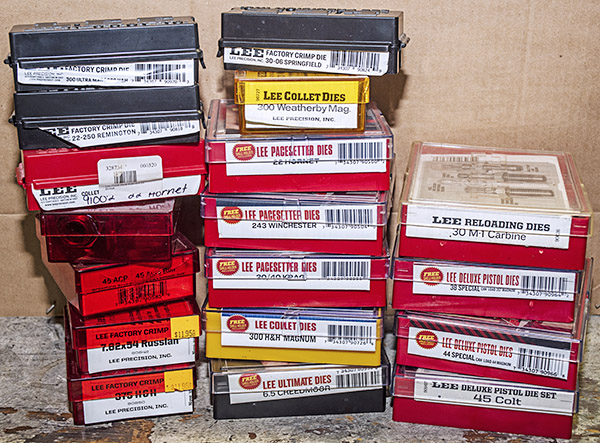
Lee advertises that their Classic Turret Press Kit includes everything needed to start making ammo, except for the dies and, of course, the components (brass, powder, primers, and bullets). I have plenty of components, and the thought of wringing out the Lee gear, writing about it, and testing the ammo in a couple of my favorite 9mm handguns checked all the boxes for me. This will be a fun project and I want to share the excitement with you.

I placed my order with Lee for the Classic Turret Press Kit, the Bench Plate Kit (something I saw on their website that appealed to me), and the 9mm dies. It all arrived a few days later, well packed in a single box. I was impressed with how fast it arrived (it shipped during the holiday season) and the packaging. The Lee folks have done this before; it’s first class customer service.
This is the right time of year to open a box full of goodies and examine the contents. I was a kid on Christmas morning. This was fun!
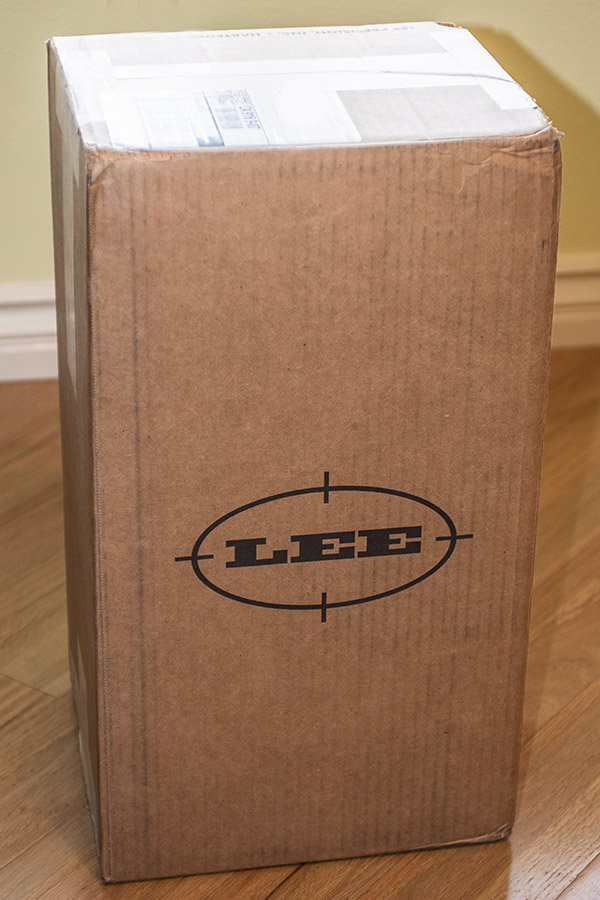
When I opened the outer container, I saw my 9mm Deluxe 4-die set and the Lee bench plate.
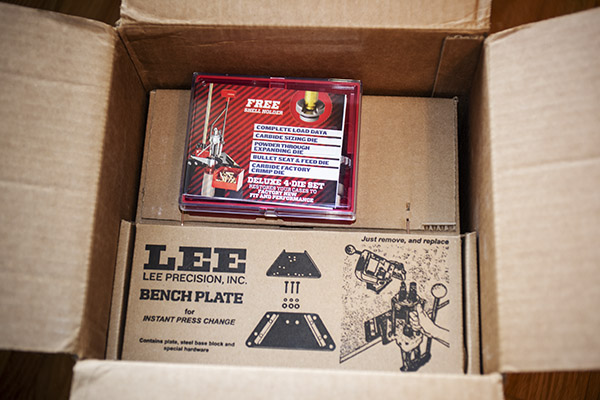
As I mentioned above, I’m a firm believer in Lee’s Deluxe dies. I can’t wait to put these to work making 9mm ammunition for my SIG P226 Scorpion and Springfield Armory 1911.

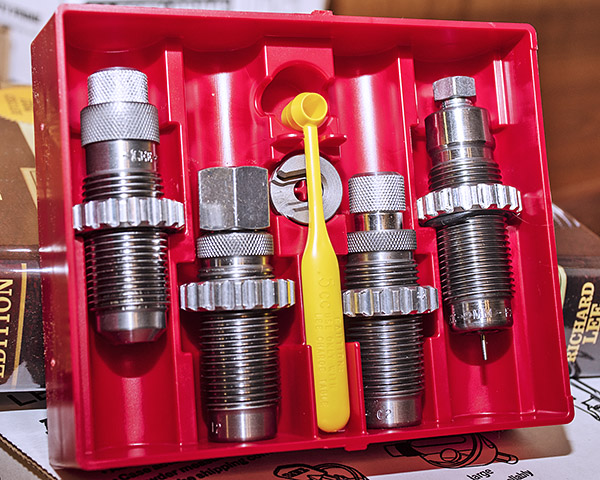
The idea behind the Lee Bench Plate is that it’s a quick detach/attach mount for a Lee press. It’s not included with the Classic Turret Press Kit (it’s priced at $39 on Lee’s website), but I like the idea of being able to quickly remove the press from my reloading bench. You’ll get a complete report on setting up and using the Bench Plate in a future ExNotes blog.
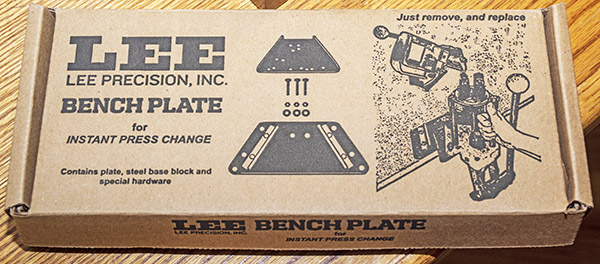
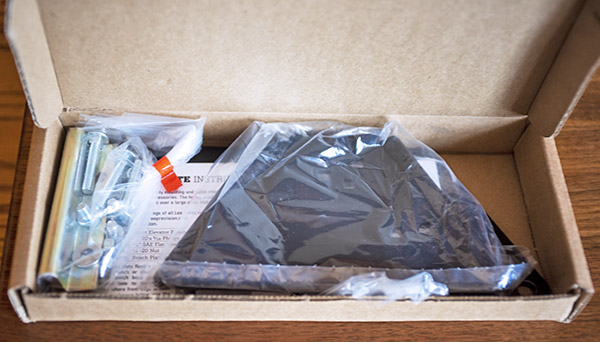
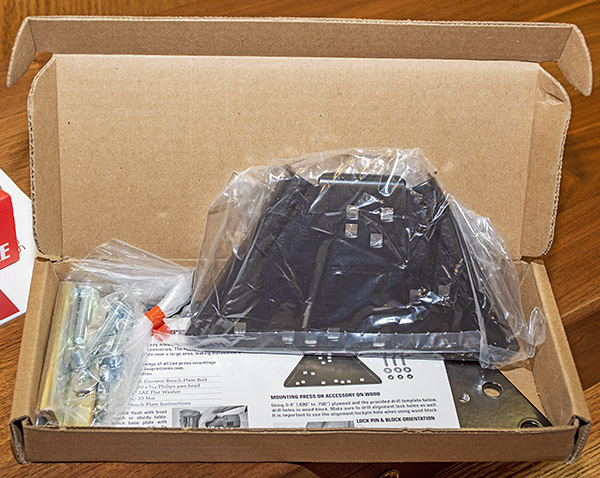
After unpacking the 9mm dies and the bench plate, I pulled out the Lee Classic Turret Press Kit. This was like one of those Russian dolls. I was peeling the onion and enjoying it.
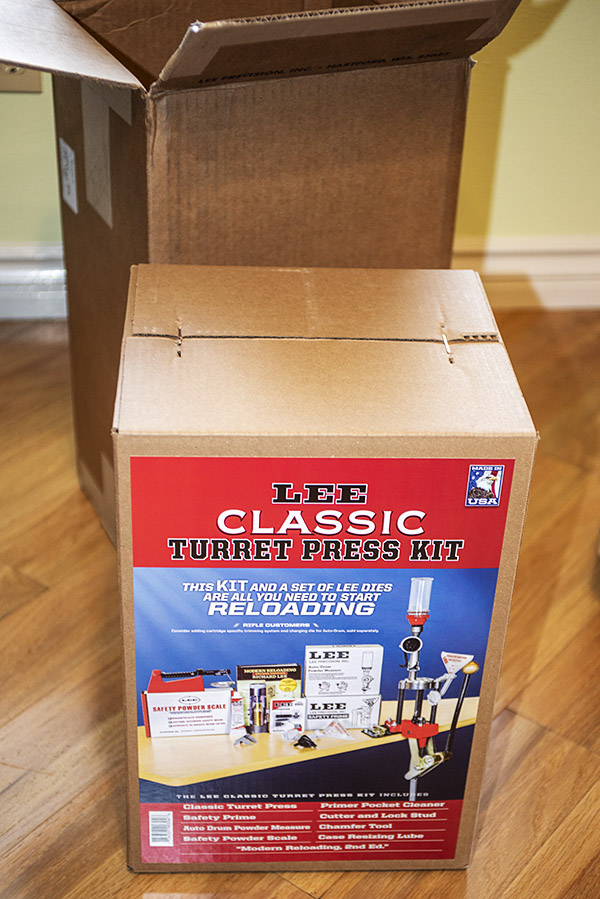
When I opened the Lee Classic Turret Press Kit, I found the Lee Safety Primer Feed, a tube of Lee Resizing Lube, and the Lee Case Conditioning Kit.

The Lee Safety Primer Feed (shown in the two photos below) is a device I have not used before. I’ll explain how it works in a future blog. I have three other Lee priming devices and I’ve been using them for decades with no problems. The Lee Safety Primer Feed sells for $30.
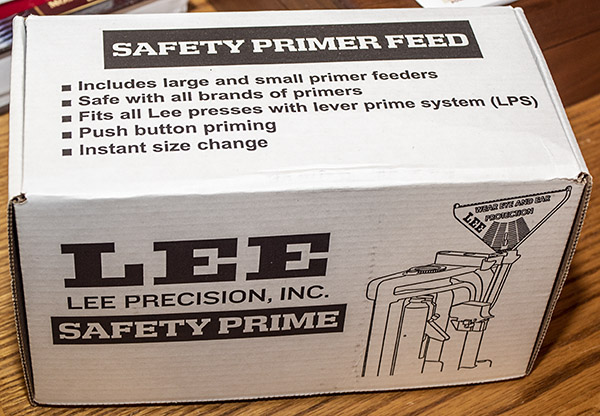
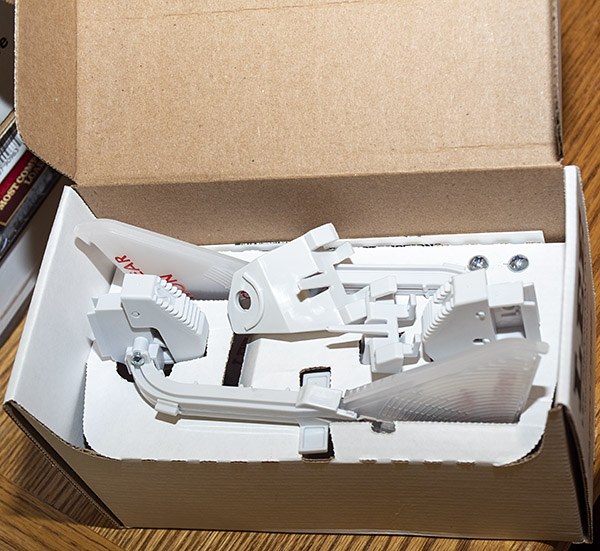
Lee includes their Case Conditioning Kit (see the photo below) with the Classic Turret Press Kit. The Case Conditioning Kit consists of a primer pocket cleaner, a case cutter and locking stud, and a chamfer to bevel the case mouth after it has been trimmed. I have not used these tools from Lee before; it will be interesting to see how they perform. I have other equipment that performs these tasks, but I had to buy those items separately. With the Lee Classic Turret Press Kit, it’s all included. The Case Conditioning Kit lists for $12.98 on the Lee site.
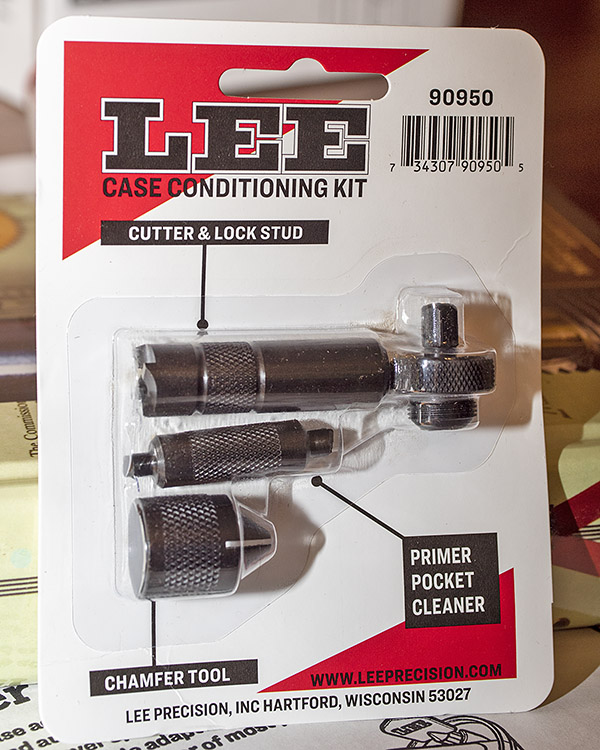
I won’t need the Lee Resizing Lube shown below because my new Lee 9mm dies include a carbide resizer (which negates the need for case lubrication). Not having to lube the cases is a good thing. On rifle cases, though, lube is necessary, so I’ll put the lube to good use on those. The price for Lee’s Resizing Lube is $5.98.

The Lee Classic Turret Press Kit includes Lee’s Modern Reloading manual (a sizeable book, comparable to the manuals from Hornady, Speer, Sierra, and other reloading component companies), and a Hodgdon reloading pamphlet. I’m looking forward to reviewing the Lee manual. I’ve been reloading a long time, but I still learn something new every time I pick up a reloading manual. If you were to buy the Lee Modern Reloading manual separately, it sells for $40.98. Lee also includes the Hodgdon Data Manual with the Classic Turret Press Kit. I’ve seen the pamphlets from Hodgdon before; I’ll take a look at this one and share my impressions in a subsequent blog.
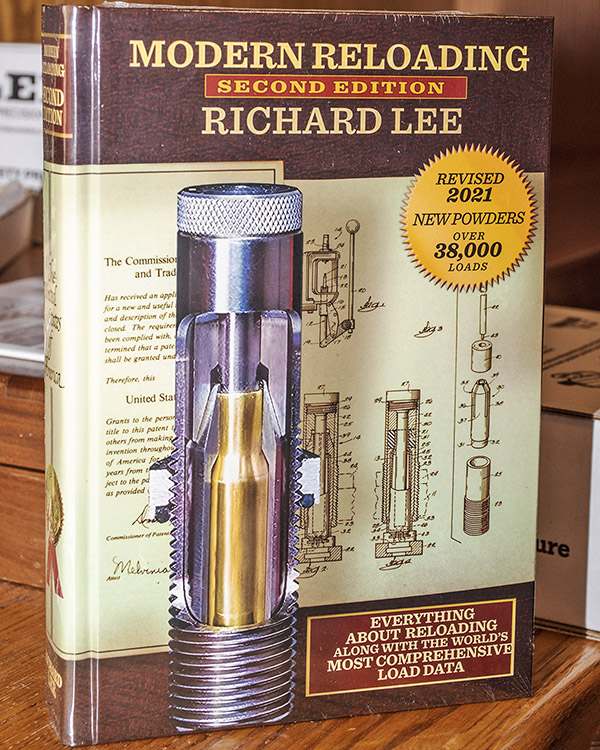
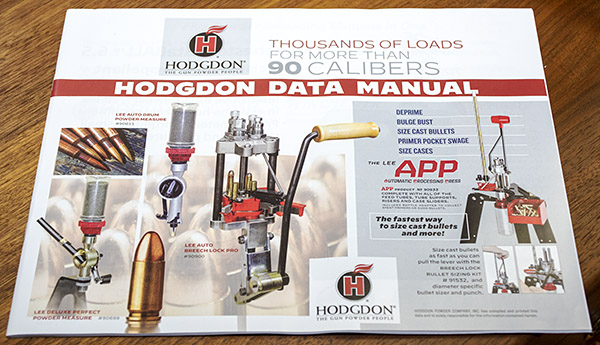
Next out of the box was Lee’s Auto-Drum Powder Measure. I’ve used an older Lee version of this device. I’m not familiar with how the new one works, but I’m looking forward to finding out. The Auto-Drum Powder Measure is infinitely adjustable. That’s a good thing. The older version used a charging plate with discrete increments; infinite adjustment is a much better way to go. The Auto-Drum Powder Measure automatically charges the case with with each stroke of the press. If purchased separately, the Auto-Drum Powder Measure sells for $55.00.
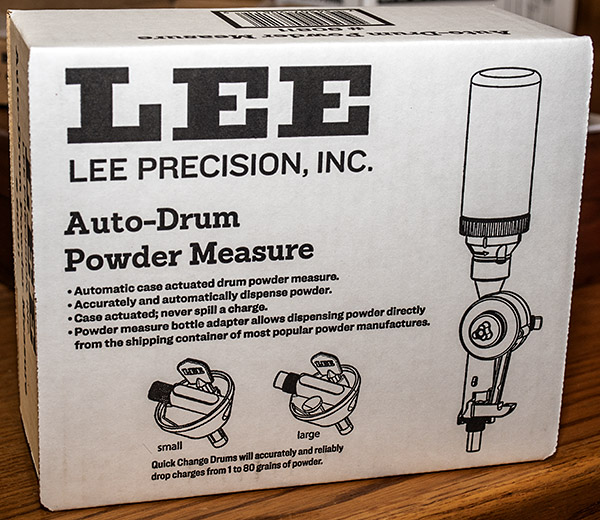
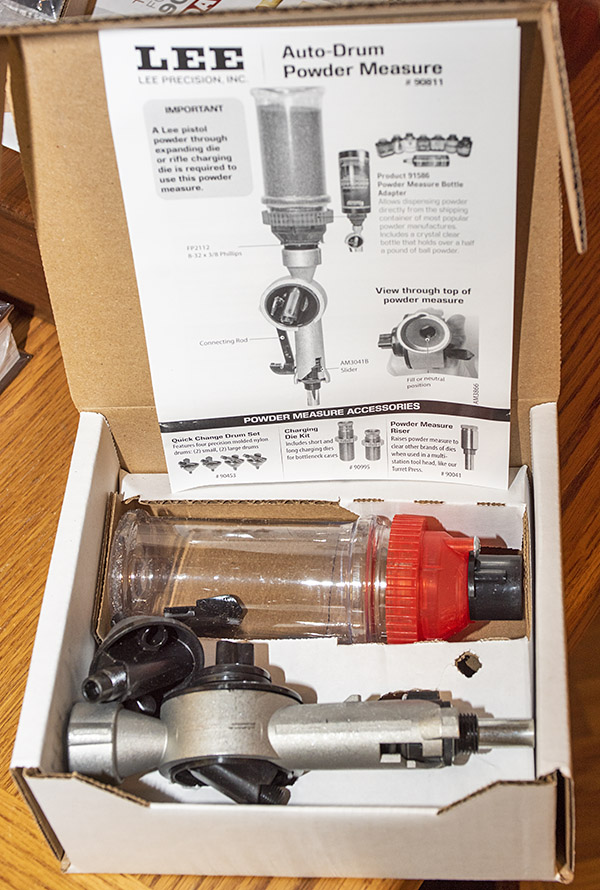
Lee includes a Powder Measure Riser in the Classic Turret Press Kit (see the photo below). This is used with the Auto-Drum Powder Measure to position the powder dispenser above the priming mechanism (it allows adequate clearance). The Powder Measure Riser sells for $9.98 on the Lee site.
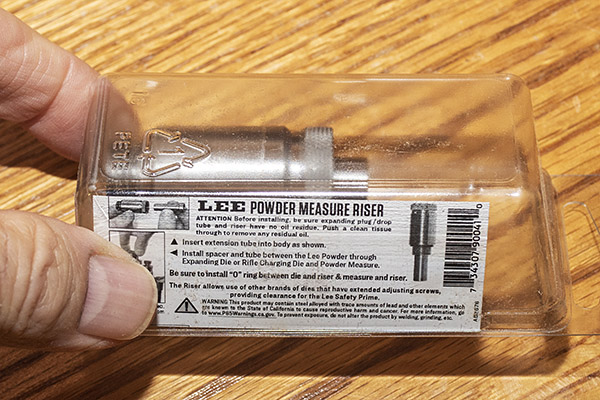
There’s a balance beam scale (the Lee Safety Powder Scale) in the Classic Turret Kit. This is a standard reloading scale. The Safety Powder Scale is $46.98 on the Lee site. You might wonder: Why use a simple mechanical scale when there are digital scales and digital powder dispensers? The reasons are simplicity, reliability, and cost. I have friends that use digital scales, and they report inaccuracies induced by nearby metal objects (have any of those on your reloading bench?), slow operation, and of course, much greater expense. For me a simple balance beam scale works best; it’s what I’ve been using for 50 years. The Lee Safety Powder Scale is new to me, and I’ll report how it works.
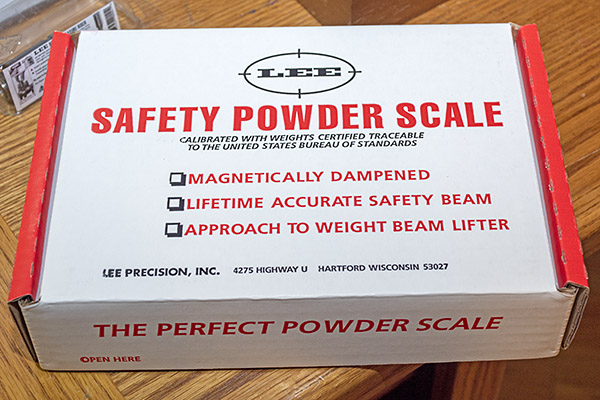
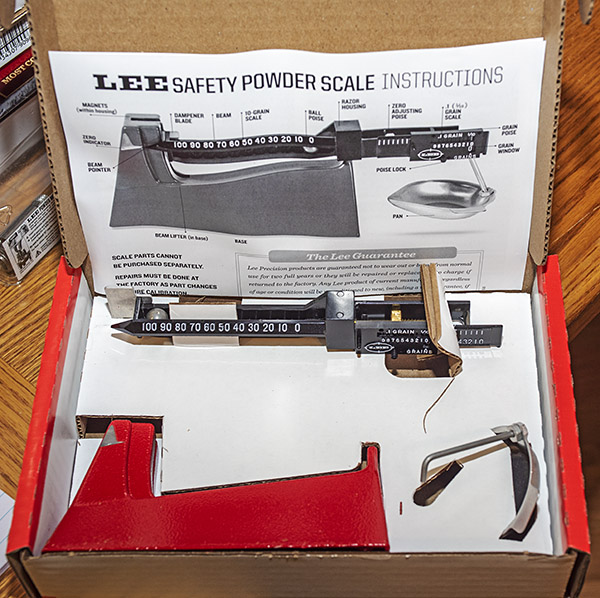
At this point, I had one more box to open, and it contained the Classic Turret Press. Lee lists the Classic Turret Press at $220. Like everything else in the Lee Classic Turret Press Kit, the Classic Turret Press was well packaged.

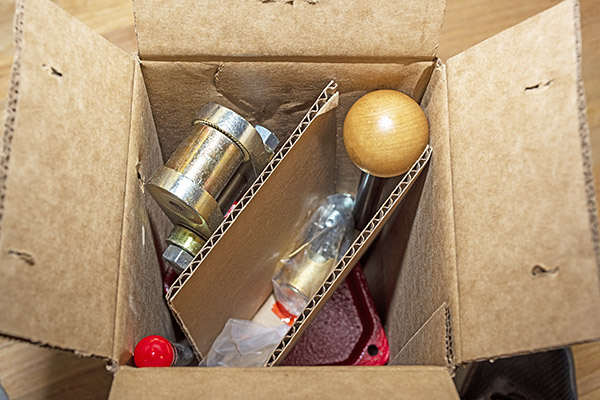
The Classic Turret Press is massive. It’s beefy, it’s heavy, and it looks to be well built. What you see below is the press, along with the operating handle, a spent primer catch tube (a nice touch), the four position turret head, and the hardware required to assemble it.
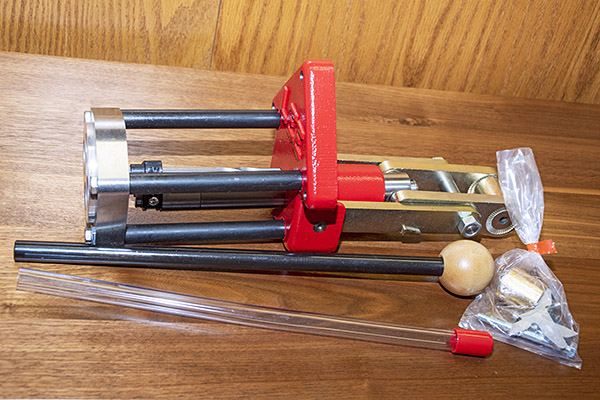
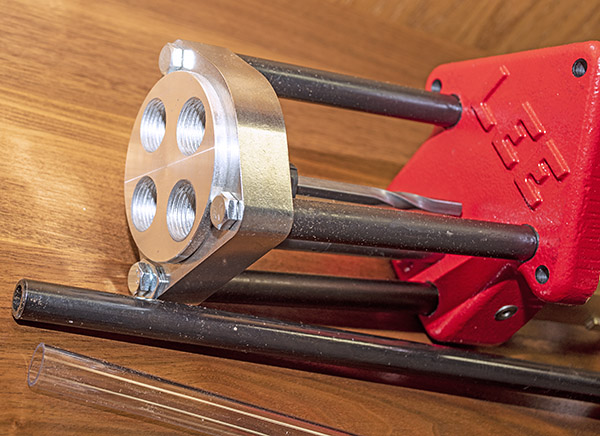
So there you have it: The Lee Classic Turret Press Kit. You might have noticed that I listed the cost for each item above separately, along with a link to the appropriate Lee page. I thought it would be interesting to sum the prices and compare the total to Lee’s Classic Turret Press Kit price:

At Lee’s price of $380 for the Classic Turret Press Kit, it’s a good deal compared to buying the items separately. But Lee goes a step further. They recognize that retailers often sell the individual items and the Classic Turret Press Kit at lower prices, and Lee states on their site that you can find lower prices by visiting a Lee retailer. One of the best places to find lower prices is Amazon. I encourage you to explore Lee’s website, and to take a look at Lee gear on Amazon.
This project is going to be fun, folks. Keep an eye on the ExhaustNotes blog as we put the Lee Classic Turret Press Kit through its paces.
Like what you see here? Don’t forget to help us by clicking on the popup ads!
There are many more shooting and reloading stories on Tales of the Gun. Hope on over and take a look.
In the spirit of complete disclosure: Lee liked our blogs on the .357 Magnum and .44 Magnum Deluxe 4-die sets and they asked us to similarly review the Classic Turret Press Kit. Lee provided the kit to us at no charge. But rest assured: That won’t color our judgment or what we report. You will get the complete story, warts and all.

